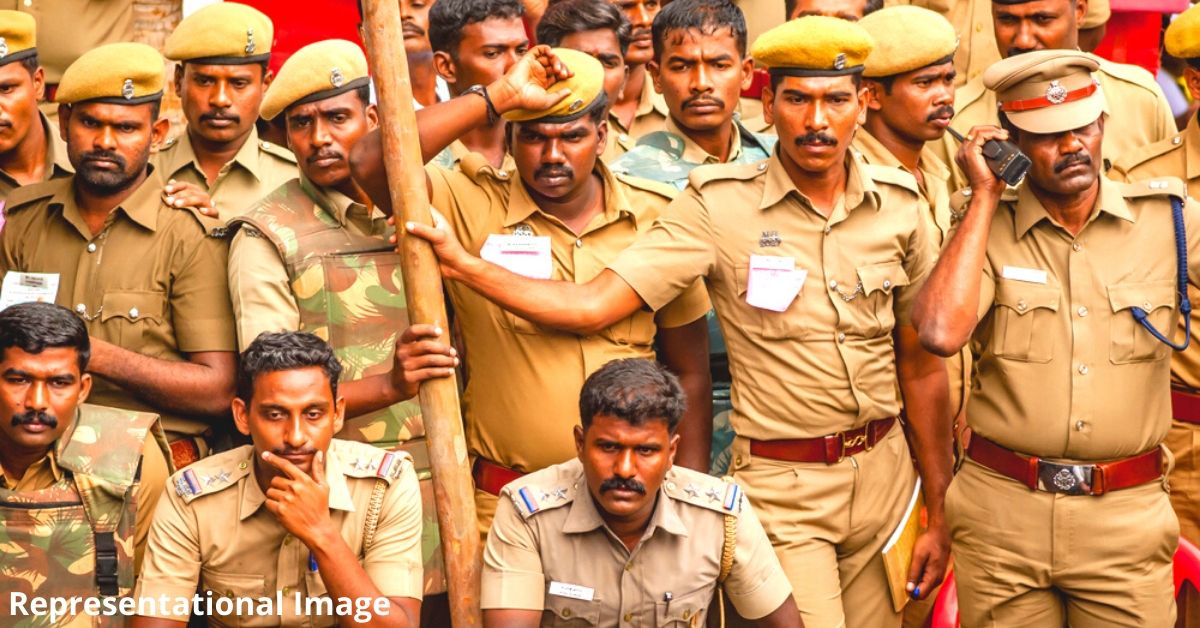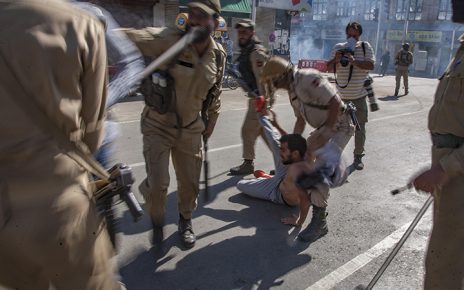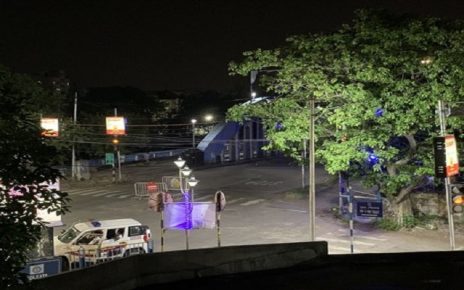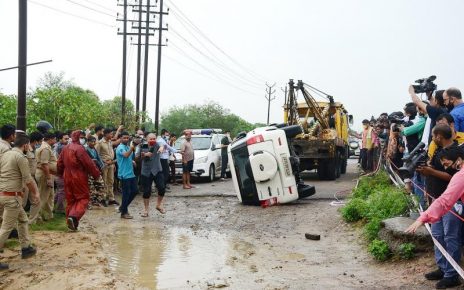The Better India
Published on 27 June 2020
By RINCHEN NORBU WANGCHUK
“If media reports are correct, there is no question of it being a third-degree murder. Whichever officer was part of the crime, they need to be prosecuted.”
On 20 June, Jeyaraj (59), the owner of a mobile store in Sathankulam, a town near Thoothukudi, Tamil Nadu, and his son Bennix (31), were taken to the local police station for allegedly keeping their store open beyond the stipulated time the night before.
By Tuesday morning, both men were dead.
Their family, friends and more than a thousand people who had gathered in protest yesterday have alleged that severe police brutality resulted in their untimely deaths. Besides compensation for the family, many have demanded that the police personnel accused of these heinous crimes be booked for murder under Section 302 of the Indian Penal Code.
Grim statistics
Going by statistics, custodial violence and deaths are quite commonplace in India.
According to a report published yesterday by the National Campaign Against Torture, a rights group, a total of 1,731 people have died in custody this year alone in India. This amounts to about five custodial deaths a day. Of the 1,731 people who have died, 1,606 deaths happened in judicial custody while 125 in police custody.
“Out of the 125 deaths in police custody, Uttar Pradesh topped with 14 deaths, followed by Tamil Nadu and Punjab with 11 deaths each and Bihar with 10 deaths,” said the report. Going further, of the 125 cases in police custody, 93 died because of alleged tourture or foul play while 24 died under what they have deemed as suspicious circumstances.
These figures indeed make for very grim reading. The institution which is meant to protect and serve all citizens are themselves committing such heinous acts.

Supreme Court Guidelines
It’s not as if the police don’t know what to do when they have a suspect in their custody. In fact, following the landmark 1997 DK Basu vs West Bengal case, the Supreme Court laid down some basic guidelines to prevent custodial abuse which have been absorbed into the Code of Criminal Procedure.
These directions have to be followed by the police. Refusal to do would result in contempt of court.
Here are some of the guidelines (Source: Commonwealth Human Rights Initiative)
Duties of police making arrest and handling interrogation:
-All police personnel should wear name tags clearly indicating their name and designation.
-Police must enter the complete details of police officials conducting interrogation in a register.
Arrest Memo:
-The police officer making an arrest has to prepare an Arrest Memo that records details of the arrest.
-The arrest memo must contain:
a. The signature of at least one witness, who can be a relative of the arrestee or a respectable person of the locality where the arrest is made.
b. The time, date, and place of the arrest.
-The arrested person should sign the arrest memo after it is properly prepared.
Inspection Memo:
-If the arrested person requests it, the arresting officer must record any minor/major injuries on his/her body in an Inspection Memo.
-The memorandum should be signed by the arrested person and the arresting officer.
-A copy of the Memo must be given to the arrested person.
Information about the arrest and detention:
-The arrested person has the right that his/her relative/friend is informed about the arrest.
-The police must contact and inform the relative/friend of the time and place of arrest, and the exact location where the arrested person is detained, at the earliest.
-If the relative/friend is in a different district/city, the concerned police station should be informed within 8-12 hours of the arrest and then convey the information to the relative/friend.
-The information of the arrest should also be sent through the district legal aid committee.
Daily Diary:
-The police must enter the details of every arrest made in the police station daily diary.
-The diary entry must include the name of the relative/friend who was informed about the arrest.
-The diary entry must state the name of the police officer in whose custody the arrested person is detained.
Medical Examination:
-The arrested person has the right to be medically examined every 48 hours during his/her detention by a trained doctor.
Right to a lawyer:
-The arrested person has the right to meet and consult a lawyer during his/her interrogation. The police cannot deny this.
Police Control Room:
-The arresting officer has the duty to inform the control room about the place of detention of the arrested person.
-This information must be sent to the Control Room within 12 hours of the arrest.
-This information must be displayed clearly on the notice board of the Control Room.
How many of these guidelines were followed in the Sathankulam case? How can we address the problem of custodial violence? How can we prevent these deaths?

Here is what three police officers have to say.
Former Director General of Police, who wishes to remain anonymous
The first thing all state police units must do is follow the instructions given by the Supreme Court in the DK Basu judgement. These instructions are legally binding on all state governments.
A massive problem in our policing system is the process of arrest first and investigation later.
In a vast majority of cases, the emphasis is on arrest, and the police usually try to coerce the suspect and extract a confession. Based on that statement, evidence is collected to buttress the case.
This is probably not a correct approach. We could learn from more advanced police systems, where the investigation is not geared or led by an arrest or the statement of the accused, and the police first or at least simultaneously collect the evidence from elsewhere and then put the accused under arrest.
Custodial torture is also driven by the pressure to perform and deliver results by way of how many people you have arrested and how many you can get convicted. Conviction is on the courts, but the trial process is unduly long and protracted. Only in exceptional cases, a trial concludes between three-six months. Most cases take years to arrive at a conclusion.
Since trial and prosecution do not get completed under a fixed period, the ordinary person’s perception is that arrest by the police is punishment. That is why, for the ordinary citizen, an arrest by police is seen as a be all and end all of investigation, law and order and the criminal justice system, instead of being seen as a preventive measure.
One possible solution is that in the UK, USA and other countries, the policemen on duty mandatorily carry body-worn cameras at all times. These have to be switched on all the time when they’re on duty — whether they are on streets, in the police stations or when conducting investigations/interrogations.
This offers some semblance of safety for the citizen because if you’re attacked, beaten or manhandled, it gets recorded. On the other hand, it’s also good for the police. If they misbehave with the police, it gets recorded. These body cameras are all integrated into the chain of evidence. So, if a policeman on duty catches a suspect, and brings him to the police station, when he is questioned, since the camera is on all the time, whatever statements are being made is recorded and uploaded to a server.
With the integration of technology and building up checks and balances, violence during custody will come down. The entire interrogation could be recorded by voice and camera. Whenever the policeman is in front of an accused or a civilian, the body cam is on and whatever its recording, it’s getting uploaded onto a central server.
The extreme case of pressure to perform is a primary driver of police violence and because other systems like the judiciary do not deliver. It’s not just the failure of policing, as we noticed in the recent case with the magistrate not doing his job properly.

Dr PM Nair IPS (Retd), former Director General of NDRF and Civil Defence
Some officers believe they need to impose force and violence to do their job. Whereas policing is done better without force.
Officers who use violence for interrogation are ill-equipped, poorly-trained or are experiencing some psychological problem. Apart from educating them, the development of skills such as communication, conversation, observation, and listening is crucial.
Another solution to prevent custodial violence would be by assigning a psychological counsellor to every police officer. This way, when they have to interrogate a victim or convict, it would happen with empathy. But, after training, if officers continue to misbehave they have to be dismissed.
In the Tuticorin case, if media reports are correct, there is no question of it being a third-degree murder. The officers who were part of the crime, need to be prosecuted.
Chaman Lal, IPS (Retd), former DGP of Nagaland, and ADG of BSF
Most custodial deaths happen to people who are living below the poverty line, and while several movements have been conducted to bring justice for victims of crimes, there has never been a single unified movement to address this issue.
A decline in professionalism among police officers, and unscientific methods used interrogation is the reason for custodial deaths. Sometimes, the public is also part of the problem. A desire for instant justice prompts police officers to take drastic measures. In the eyes of the public, these men may seem like a hero, but it is considered a custodial death.
To prevent custodial deaths in the future, scientific methods of interrogation need to be introduced.
Common people turn to the police for help when they are in trouble, and officers need to be given special emphasis on developing their people skills.

Conclusion
The brutal nature of Jayaraj and Bennix’s death have yet again raised critical questions about custodial violence. While many are outraged in this case, the same people often turn a blind eye to custodial violence in cases where the suspect is accused of more serious crimes. These are accused, not convicted persons.
By its very nature, custodial violence goes against the very grain of sensible policing. Custodial violence and abuse of police power are human rights abuses that need to be shunned by the general public and not celebrated.
(With inputs from Roshini Muthukumar)
(Edited by Gayatri Mishra)




